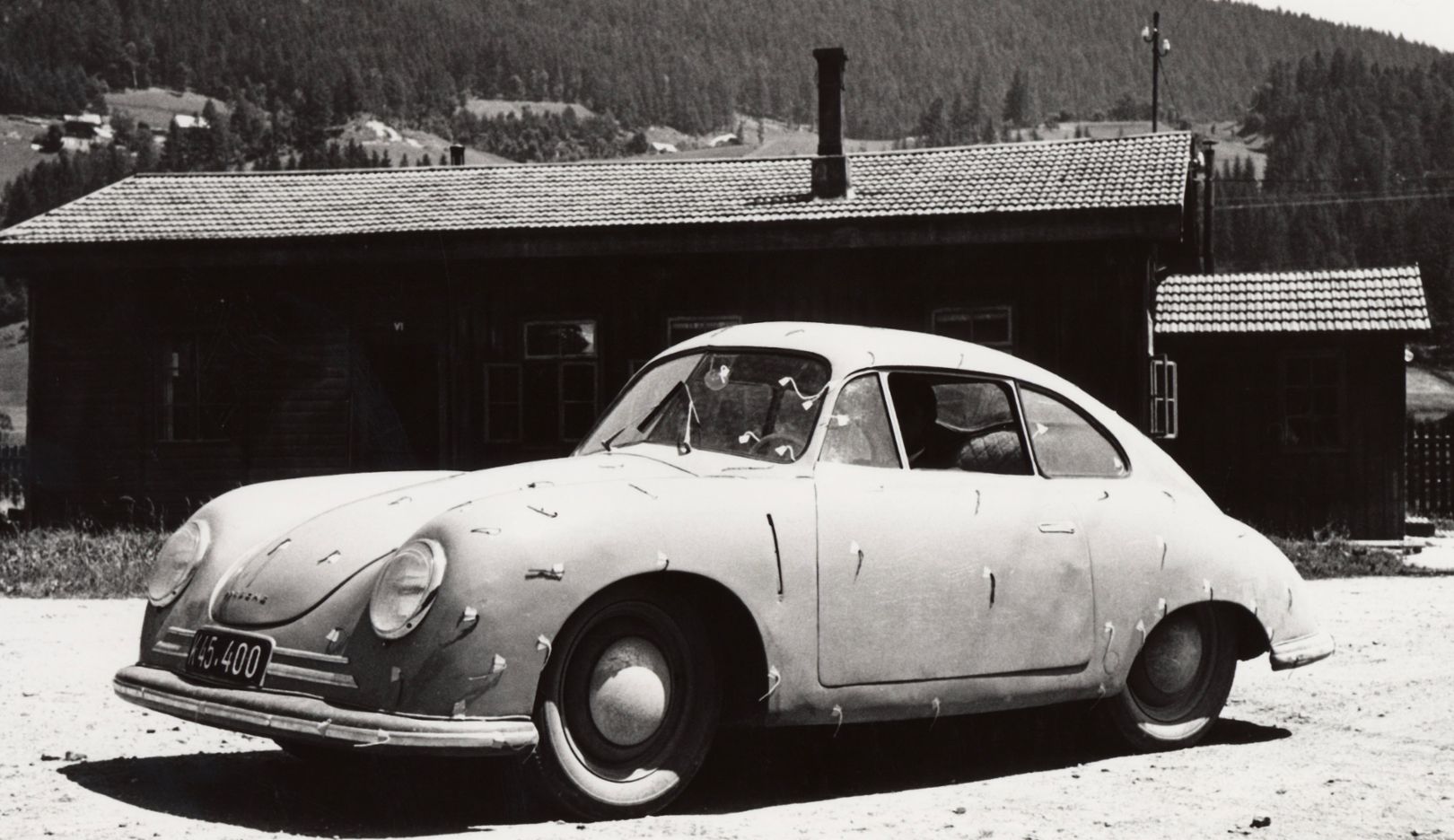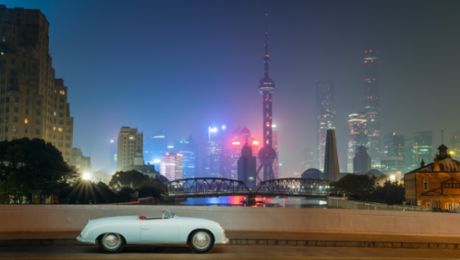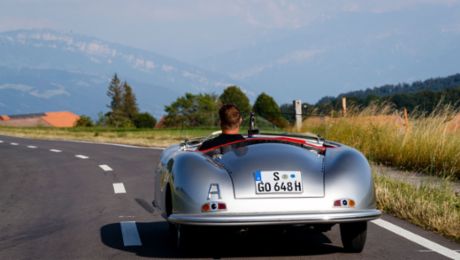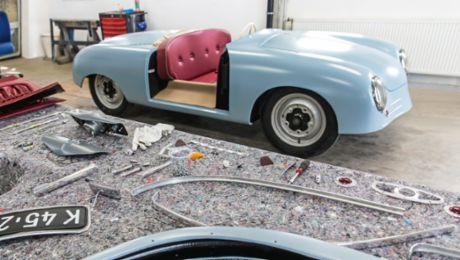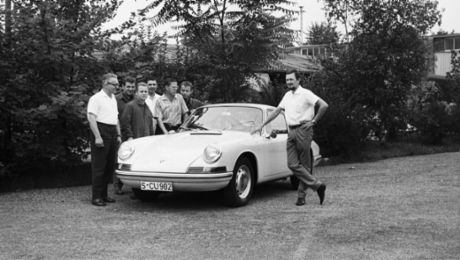Germany in autumn 1943: the company “Dr. Ing. h. c. F. Porsche Gesellschaft mit beschränkter Haftung, Konstruktion und Beratung für Motoren- und Fahrzeugbau”, the design office of Ferdinand Porsche, was looking for a new location twelve years after it had been founded. This was due to the bombing raids on Stuttgart, which were becoming more and more frequent and were putting production at risk. In 1944, Ferdinand Porsche therefore moved to the much safer location of Gmünd in Carinthia.
The working conditions in the buildings of a former sawmill were more than difficult for the around three hundred company employees. There was a lack of machines, also often a shortage of materials, and the wooden barracks were bursting at the seams. In the machine barracks, space was so tight that the workers could hardly move between the lathes. Additional barracks had to be built for the management and canteen, and a settlement for the design engineers was built in the district of Gries an der Lieser. In spite of this, the location in a remote valley beyond the Großglockner mountain had a priceless advantage: there was hardly any threat from the turmoil of the war and there was above also enough to eat for all employees in the rural location.
Ferdinand Porsche was interned by the French as from December 1945. He was released only in 1947 and was formally exonerated in 1948. During this period, the fate of the company was in the hands of Ferdinand’s son, Ferdinand Anton Ernst Porsche, known as Ferry. “In the beginning I looked around and could not find quite the car I dreamed of. So I decided to build it myself.” The company had to be kept alive and this was achieved above all through design of agricultural machinery such as tractors, cutting fingers and cable winches. However, it was a contract for vehicle construction for the type 360 Cisitalia for the Italian race car manufacturer of the same name that provided the funds needed for Ferry Porsche’s dream car.
-CoupÇ,-Produktion-in-GmÅnd-(KÑrnten),-hinten-links_-Erwin-Komenda,-rechts_.jpeg/jcr:content/Bild%20Text%20HNE%205251_1_1948%20Porsche%20Typ%20356_2%20(Gm%C3%85nd)%20Coup%C3%87,%20Produktion%20in%20Gm%C3%85nd%20(K%C3%91rnten),%20hinten%20links_%20Erwin%20Komenda,%20rechts_.jpeg)
In 1948, the time finally arrived. The car was initially still referred to by the designation VW Sport. The tubular frame made of steel supported a body made of aluminium – and therefore reflected the purest motor sports philosophy at the time. Important components such as the front axle, transmission and engine were taken from the Volkswagen “Beetle”. The centrally located engine had a displacement of 1,131 cubic centimetres, but the Porsche engineers succeeded in increasing its power output to 35 PS by means of new cylinder heads and fine tuning. This was sufficient to accelerate the vehicle with a weight of only 585 kilograms to a top speed of 135 km/h. On 8 June, 1948, the 356 “No. 1” Roadster with the chassis number 356.001 received its general operating permit.
It remained a one-off. Work on the 356/2 took place parallel to construction of the “No. 1”, and the first Coupé was completed in August 1948. The basis of the 356/2 models was a steel box frame as the chassis. The output of the four-cylinder boxer engine was increased to 40 PS and the engine was moved to the rear. This created space for jump seats and luggage. The engine of the Porsche 911, the core vehicle of the brand, is still installed behind the rear axle today. 44 Coupés and eight Cabriolet models of the 356/2 were built from winter 1948/49 up to the end of production in Austria in 1950. The Coupé bodies were hammer-formed from aluminium sheets by small specialists such as Kastenhofer, Keibl or Tatra in Vienna and Beutler in Switzerland, while the Cabriolet bodies were supplied by Keibl and Kastenhofer and by Beutler in Thun, Switzerland. These models from Gmünd were what the Porsche brand presented to an international audience at the Geneva Motor Show in spring 1949.
When Ferry Porsche took the decision to build “his” 356, he assumed that he would be able to sell around 500 of such sports cars. That was perhaps his only error of judgement: in fact, just under 78,000 Porsche 356 vehicles were built up to 1965.
Info
Published in 9:11 Magazine, Episode 13.
